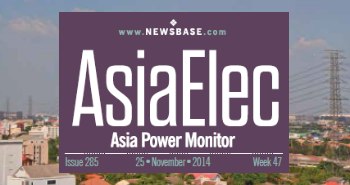ASIAELEC: Siemens Gamesa’s typhoon-proof offshore turbine surges ahead

Siemens Gamesa’s latest offshore turbine design has been certified typhoon-proof by international regulators, its second model to receive such a rating from TÜV NORD.
Its SG 11.0-200 DD design was given a rotor-nacelle assembly (RNA) IEC type certificate from TÜV NORD, which covers resistance to wind of speeds up to 57 metres per second for 10 minutes and three-second gusts of up to 79.8 metres per second.
Siemens Gamesa’s SG 8.0-167 DD model had previously received a similar certification from TÜV NORD.
The two turbine designs use the offshore Direct Drive platform, of which Siemens Gamesa has installed over 1,200 units across the globe, including at the Formosa 1 project in Taiwan.
The robustness of the installed fleet is demonstrated via availability rates across the 1,200 units of above 97% in calendar year 2020.
“We are driven to ensure that our turbines can sustain the extreme weather events such as typhoons seen in Asia-Pacific. We’re thus tremendously proud to have received this second rotor-nacelle assembly type certification. With the region poised to become even more significant globally, it strengthens our focus on delivering value to our customers,” says Marc Becker, CEO of the Siemens Gamesa Offshore Business Unit.
The SG 11.0-200 DD turbine has a rated capacity of 11 MW and a 200-metre diameter rotor using 97-metre long Siemens Gamesa B97 IntegralBlades.
The smaller SG 8.0-167 DD wind turbine has a rated capacity of 8 MW and a 167-metre diameter rotor, using 81-metre long Siemens Gamesa B81 IntegralBlades.
The two products utilise the same patented Siemens Gamesa Direct Drive generator technology. Both turbines, along with the larger SG 14-222 DD offshore wind turbine, are designed to withstand extreme wind conditions such as those covered by T-Class compliance.
In addition to T-Class wind speed compliance, Siemens Gamesa is working closely with local authorities and certifying bodies to ensure that all applicable standards are considered. For example, the company is part of the international ACE (Alleviating Cyclone and Earthquake challenges for wind farms) Joint Industry Project.
The initiative aims at gathering cross-industry experiences to align wind turbine design methodologies for extreme environmental conditions.
Siemens Gamesa has been developing T-class turbines in order to cope with wind speeds in such areas as offshore Taiwan and Japan. These product features will contribute to the further expansion of offshore wind in Asia-Pacific, where it is meant to play an important part in the decarbonisation of society.
In Japan, the government revealed in late 2020 its long-term plans to install 30-45 GW of offshore capacity by 2040.
“Throughout the years, we have established a unique track record in the industry, including in Asia-Pacific, as we installed and maintain the very first commercial project in Taiwan, Formosa 1. Going forward, we will leverage this experience and prepare to deliver the highest possible standards to support the broader adoption of offshore wind in the region,” says Niels Steenberg, Siemens Gamesa executive general manager for Offshore in Asia-Pacific.
Russell Cato, managing director for Siemens Gamesa in Japan, adds: “Building upon more than 20 years of presence in Japan, Siemens Gamesa is committed to contribute to the growth of the local wind power market. On the offshore side, we firmly believe in the potential of the industry, and are encouraged in our endeavours by the strong promotion plan from the government, towards the decarbonisation of society by 2050.”



Follow us online